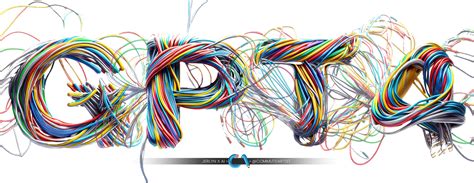Artificial Intelligence has come a long way, and GPT-4o is a testament to this evolution. This multimodal model, which handles both text and images, is unlike previous iterations that were primarily text-based. While some may wonder how GPT-4o decodes images and converts them into textual information, the process is both intriguing and highly sophisticated. The potential it holds for various applications from data journalism to advanced OCR (Optical Character Recognition) is vast. Understanding this technology could redefine many aspects of our interaction with AI.
An eye-catching aspect of GPT-4o is its ability to transform a 7×7 grid of colored shapes into JSON format. This encapsulates one of the cleverest ways of testing the AI’s performance. The model’s versatility is evident here, but it’s not just the color and shapes that it decodes. This AI model is capable of handling complex, 512×512 low-resolution images, breaking them down into approximately 170 tokens. Fascinatingly, it’s reported that one can sometimes retrieve more words from an 85-token image than from an 85-token text!
The efficiency with which GPT-4o operates raises questions and discussions around its inner mechanisms. Is there an element of image-to-text transfer that operates through ‘magic vectors?’ What we can gather from various experiments and observations is that images are converted into token forms, possibly utilizing a VQGAN (Vector Quantized Generative Adversarial Network). GPT-4o, despite not being publicly enabled for image generation, can essentially be trained on sequential image tokens. The convergence of these tokens and the overall context window gives it its flexibility and efficacy.
The process is further enriched by sophisticated convolutional networks that help create a quantized version of images. It’s also mentioned that models like VQGAN can handle complex image configurations by outputting these as tokens; for instance, a 512×512 image turning into a 13×13 grid of tokens. This begs the question of whether traditional models like CLIP, which embed an image as a single vector, are evolving into more complex, multimodal forms. Indeed, GPT-4o seems to employ such transformative techniques internally.
One significant discussion point is the fact that OpenAI has not provided clear documentation on how GPT-4o functions, leaving many developers and researchers guessing. Withholding details might be a strategy to stay ahead in the competitive AI landscape, but this lack of transparency can hold back innovation and accurate usage in real-world scenarios. Stories of humorous or frustrating bugs—like the one involving GPT-4 Vision hallucinating the content of a resized PDF—highlight the need for better understanding and comprehensive guidelines.
The implications of these technical advancements are profound. As commented, the high cost and accuracy of multimodal models like GPT-4o could outperform existing OCR tools like Tesseract or advanced setups using Paddle OCR. The limitation of LLMs (Large Language Models) in terms of ‘hallucination’ is a legitimate concern, suggesting that dedicated OCR tools might be more reliable. Moreover, integrating these AI systems into practical use cases demands meticulous fine-tuning and increased fidelity to avoid losing critical information. To adapt effectively, we need to harness these multimodal LLM capabilities while circumventing their doctrinal errors through validated practices and layered verification.
There are multifarious potential applications of this technology in areas like digital archiving, automated journalism, and much more. But to unlock and apply GPT-4o’s full capabilities, there needs to be a bridging of the current gap in understanding these models’ inner workings and feeding methodologies. It requires a conscientious effort from both AI developers and users to experiment, share knowledge, and build frameworks that emphasize precision and utility. The journey doesn’t stop at generating tokens from images; it’s about refining these processes to become interchangeable, efficient, and universally applicable, setting the stage for future AI innovations.


Leave a Reply